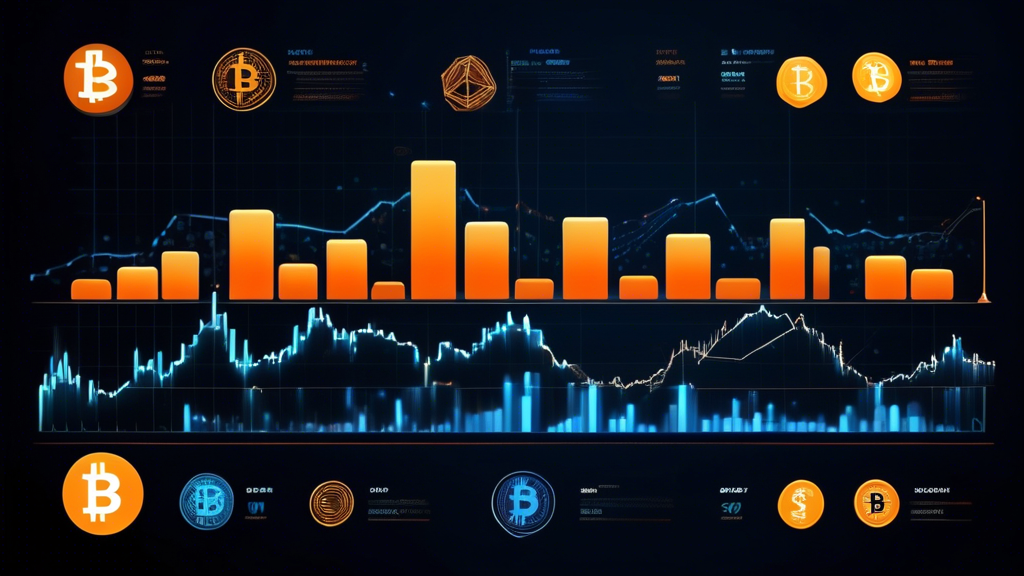Understanding the Basics of a Crypto Futures Exchange
In recent years, cryptocurrency has surged in popularity, ushering in new trading platforms like crypto futures exchanges. These platforms play a pivotal role in the crypto market, allowing traders to speculate on the future prices of digital currencies. With the ability to use contracts and leverage, traders can potentially maximize returns, making crypto futures exchanges an attractive option for seasoned investors. Understanding the fundamentals of how these exchanges work is crucial for anyone looking to dive into the world of crypto futures trading.
What is a Crypto Futures Exchange?
A crypto futures exchange is a marketplace where investors can trade futures contracts on cryptocurrencies. These contracts are agreements to buy or sell a specific amount of cryptocurrency at a predetermined price on a future date. Unlike traditional stock exchanges, crypto futures exchanges allow traders to speculate on the price movements of cryptocurrencies without actually owning the underlying asset. This form of trading hinges on the use of leverage, enabling traders to increase their exposure to the market while requiring a smaller amount of capital upfront.
The integration of leverage in futures trading brings both opportunities and risks. While it can amplify profits, it also has the potential to enhance losses if the market moves against the trader’s position. Therefore, understanding the mechanics of leverage and contracts is essential for mitigating risks and making informed trading decisions. Crypto futures exchanges are influential in the broader cryptocurrency market, contributing to price discovery, liquidity, and enabling hedging strategies for traders.
What is a Crypto Futures Exchange?
Understanding the Core Concept
A crypto futures exchange is a digital marketplace where individuals can buy and sell cryptocurrency futures contracts. These exchanges operate similarly to traditional futures exchanges, allowing traders to speculate on the future price of cryptocurrencies like Bitcoin, Ethereum, and others, without ever having to own the actual digital assets. Instead, participants agree to buy or sell a specific amount of cryptocurrency at a predetermined price at a future date.
How a Crypto Futures Exchange Operates
At its core, a crypto futures exchange facilitates the trading of futures contracts, which are standardized agreements between two parties. These contracts detail the conditions under which a cryptocurrency will be bought or sold at an agreed-upon price and date. The main operations of these exchanges revolve around providing the infrastructure for matching buy and sell orders, ensuring liquidity and efficient transaction processing.
Most crypto futures exchanges operate on a digital platform, providing users with access to global markets 24/7. Traders can engage in buying contracts if they believe the price of the underlying cryptocurrency will rise or sell contracts if they speculate it will decrease, leveraging the volatility of digital currencies to their advantage.
Key Components of Crypto Futures Trading
One of the critical elements of crypto futures trading is contracts. These are the standardized instruments that detail the amount, price, and expiration date of the trade. They serve as the binding agreement between the buyer and seller within the exchange.
Another essential component is leverage. This feature allows traders to control a larger position than what their actual capital would allow. For instance, with a 10x leverage, a trader can control a $10,000 position with just $1,000 of their own money. While leverage can amplify profits, it also increases the risk of losses, making risk management a critical skill in futures trading.
The Importance of Crypto Futures Exchanges
Crypto futures exchanges play a vital role in the broader cryptocurrency market. They provide liquidity, enable price discovery, and offer a platform for speculation. By allowing traders to bet on future price movements, these exchanges help stabilize markets by promoting balanced buying and selling activities.
Furthermore, futures exchanges contribute to the maturity of the cryptocurrency market by offering tools that are common in traditional financial markets. This includes complex trading strategies like hedging, which can protect investors against adverse price movements, making cryptocurrencies more appealing to institutional investors and risk-averse traders.
In conclusion, a crypto futures exchange is an essential component of the cryptocurrency ecosystem. By understanding its operations, key components, and its significance, traders can better navigate the volatile and exciting world of digital currencies. As the cryptocurrency market continues to evolve, futures exchanges are expected to play an increasingly integral role in providing structure, stability, and opportunities for profit.
Key Features of a Crypto Futures Exchange: Trading Strategies and Tools
In the dynamic world of cryptocurrency, a crypto futures exchange stands out for offering traders not just the opportunity to bet on the future value of cryptocurrencies but also a suite of powerful strategies and tools designed to maximize their market engagement. Whether you’re an experienced trader or a newcomer to the crypto futures exchange landscape, understanding the array of strategies and instruments available is essential for effective trading and risk management.
Trading Strategies in Crypto Futures Exchanges
The strategies employed within a crypto futures exchange often define the level of success and risk a trader is exposed to. Here are some of the most prevalent strategies:
Hedging
Hedging is a risk management strategy used to protect against potential losses. In the context of a crypto futures exchange, hedging involves taking a futures position contrary to one’s current position in the cryptocurrency spot market. For instance, if a trader holds Bitcoin and anticipates a potential downturn, they might enter into a futures contract to sell Bitcoin at a set future date and price, thereby locking in a price and mitigating the risk of loss due to market fluctuations.
Speculation
Speculation in a crypto futures exchange allows traders to capitalize on the price movements of cryptocurrencies without owning the underlying asset. Speculators bet on the direction in which they believe the cryptocurrency will move. If their prediction is correct, they stand to make significant gains; however, if they’re wrong, potential losses can also be substantial. The allure of speculation lies in its potential for high returns, albeit accompanied by a high risk.
Arbitrage
Arbitrage involves simultaneously buying and selling a cryptocurrency across different markets to exploit price discrepancies. For instance, a trader might notice that Bitcoin is sold at a lower price on one crypto futures exchange compared to another. By buying low and selling high, the trader can pocket the difference. This strategy requires quick action and precise execution, but it can be a lucrative approach in volatile markets.
Essential Tools and Features in Crypto Futures Exchanges
Trading in a crypto futures exchange is greatly enhanced by the availability of sophisticated tools and features. These tools not only facilitate better trading experiences but also help traders to effectively manage risks and optimize profits.
Margin Trading
Margin trading is a powerful feature that allows traders to borrow funds to increase their buying power. On a crypto futures exchange, this means that a trader can open positions larger than their account balance, amplifying both potential gains and losses. It is a double-edged sword that requires careful management but offers significant potential for savvy traders looking to leverage their market insights.
Order Types
A crypto futures exchange typically offers a variety of order types to help traders execute their strategies with precision. These may include:
- Market Orders: Execute immediately at the current market price.
- Limit Orders: Place trades only at a specific price or better.
- Stop Orders: Trigger trades when the market reaches a predetermined price, aiding in both entry and exit strategies.
- Trigger Orders: Execute based on specific conditions being met, further automating the trading process.
The choice and proper application of these orders can significantly influence a trader’s success rates in the volatile cryptocurrency markets.
Analytics and Trading Signals
Staying ahead in the competitive environment of a crypto futures exchange requires access to accurate data and insights. Advanced analytical tools allow traders to assess market conditions, track price trends, and predict future movements. Many exchanges offer integrated charts with technical indicators, enabling traders to apply strategies like moving averages, relative strength index (RSI), and Fibonacci retracement levels.
Additionally, some exchanges offer trading signals that alert traders to potential buy or sell opportunities based on market algorithms. While these signals can never guarantee success, they provide valuable insights that can complement a trader’s strategy.
Enhancing Risk Management and Profit Maximization
Utilizing the tools and strategies available on a crypto futures exchange can significantly bolster a trader’s ability to manage risks and maximize profits. By strategically applying leverage with margin trading, using protective orders, and analyzing data-driven insights, traders can actively shield their investments from market volatility.
More importantly, engaging in continuous learning about market trends and refining strategies based on historical performances can also help traders stay competitive and achieve their financial goals in the high-stakes realm of crypto futures exchanges.
Choosing a Crypto Futures Exchange: Factors to Consider
As the interest in cryptocurrency continues to rise, more investors are turning to crypto futures exchanges to speculate on the future prices of digital assets. However, choosing the right crypto futures exchange is crucial for ensuring both security and profitability in this rapidly-evolving market. Below, we explore the key factors you should consider when selecting a crypto futures exchange and provide insights into what differentiates popular platforms.
Security: The Foundation of a Trustworthy Exchange
Security is paramount when dealing with cryptocurrency transactions. The decentralized nature of cryptocurrencies makes them both a valuable target for hackers and difficult to recover once stolen. When choosing a crypto futures exchange, prioritize platforms with a solid reputation for security. Look for exchanges that implement robust security protocols, such as two-factor authentication, cold storage for funds, and advanced encryption for data protection.
In addition to technological safeguards, consider the exchange’s regulatory compliance. Exchanges that adhere to local and international regulations often implement stricter security measures and offer increased transparency, enhancing user trust. Always review the exchange’s history and community feedback to identify any past security breaches or issues.
Fee Structures: Understanding the Costs
Fees play a significant role in your overall trading profitability, making them an essential factor when choosing a crypto futures exchange. Most exchanges have varying fee structures, including trading fees, withdrawal fees, and deposit fees. Some exchanges offer lower fees for high-volume traders or provide incentives for using their native tokens. It’s vital to understand these structures and how they align with your trading volume and strategy.
Be wary of exchanges with hidden costs. Always read the fine print to fully understand transaction fees, as well as potential costs incurred through currency conversion or overnight positions. Comparing these fees across multiple exchanges can save you significant funds over time, particularly if you are an active trader.
Platform Usability: Enhancing the Trading Experience
Usability of the trading platform is a critical component of your trading experience. Look for an exchange that offers a user-friendly interface, especially if you are a beginner. A well-designed platform should provide easy navigation, intuitive order placement, and quick access to market data and charts. Advanced traders might prefer platforms that offer more sophisticated trading tools, such as customizable dashboards, advanced order types, and comprehensive charting capabilities.
Additionally, responsive customer support is a hallmark of a well-rounded user experience. Choose platforms that offer multiple channels of support, such as live chat, email, and phone support, with prompt responses to enquiries.
Comparing Popular Crypto Futures Exchanges
There are numerous crypto futures exchanges available, each offering unique features. Popular exchanges include Binance Futures, BitMEX, and Bybit, among others. We compare these exchanges based on security, fees, and platform usability:
- Binance Futures: Known for its comprehensive security measures, Binance offers competitive fees, especially when using its native BNB token. The platform is praised for its wide array of trading pairs and user-friendly interface.
- BitMEX: One of the pioneers in crypto futures trading, BitMEX is well-known for its high liquidity and deep order book. Although it primarily caters to experienced traders with its advanced features, it offers robust security and relatively low fees.
- Bybit: Emerging as a strong competitor, Bybit offers a seamless trading experience with an emphasis on technological innovation and usability. Bybit’s fee structure and customer service are highly rated, making it ideal for both novice and experienced traders.
Ensuring a Safe and Efficient Trading Experience
To ensure a secure and effective trading experience, conduct thorough research before committing to any exchange. Start by assessing user reviews and expert opinions to gauge the exchange’s reputation and reliability. Testing the platform with smaller transactions can also provide insights into its performance and customer service responsiveness.
Beyond choosing the right exchange, it’s essential to implement personal risk management strategies. Never invest more than you can afford to lose, and always stay informed about market changes and technological developments. By considering these factors and continuously educating yourself, you position yourself for success in the dynamic world of crypto futures trading.
Conclusion
In conclusion, the realm of a crypto futures exchange presents a dynamic and influential facet of the modern cryptocurrency market. These exchanges serve as a catalyst, allowing traders to engage with cryptocurrencies in a manner that transcends traditional spot trading. By offering futures contracts and leveraging opportunities, they facilitate both strategic risk management and speculative ventures.
The key features of a crypto futures exchange, such as sophisticated trading strategies, advanced tools, and various order types, equip traders with the necessary arsenal to navigate this volatile market. With these instruments, participants can effectively manage their trades, mitigate risks, and optimize potential returns, making futures exchanges a cornerstone of the cryptocurrency trading environment.
Furthermore, selecting the right crypto futures exchange is paramount. Prospective traders should diligently assess factors like security, fee structures, and platform usability to ensure a well-rounded trading experience. By comparing popular exchanges, individuals can identify platforms that align with their trading style and offer the reliability necessary for sustained success in futures trading.
Ultimately, as the cryptocurrency landscape continues to evolve, crypto futures exchanges will remain a pivotal component, providing traders with diverse opportunities and tools necessary to leverage market movements effectively. As with any financial endeavor, staying informed, vigilant, and strategic will be key in harnessing the full potential of crypto futures trading.



